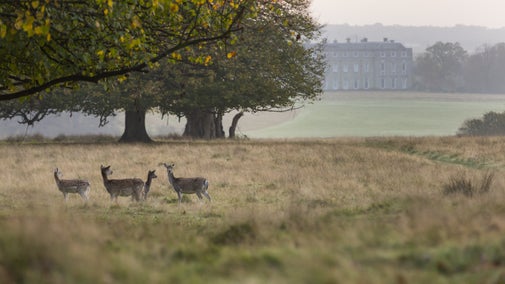Cissbury Ring butterfly walk
Sussex
Explore one of the best butterfly sites in Sussex with this circular walk along the Cissbury Ring to see numerous Adonis and chalkhill blues, dark-green fritillaries and marbled whites.
Near to
Cissbury RingStart point
Storrington Rise car park in Findon Valley, grid ref: TQ129076Trail information
Explore the most historic hill on the South Downs
The walk is also very rich in flora, including bee orchids, field fleawort and round-headed rampion, and has impressive areas of chalk lichen lawns.
More near here
Cissbury Ring history and nature trail
Follow an ancient road to discover history, wildlife and panoramic views from the second largest Iron Age hillfort in the south of England.

Estate walk at Sheffield Park
Explore the wider Sheffield Park estate and discover the historic and natural importance of this piece of Sussex countryside.

Clifftop walk from Birling Gap to Exceat
Experience iconic clifftop views of the Seven Sisters coastline and discover the history of this walk to Exceat and the Seven Sisters Country Park.

Petworth ancient trees walk
Discover more about the ancient trees that dominate the skyline of Petworth on this circular walk in Sussex.

Get in touch
Our partners

We’ve partnered with Cotswold Outdoor to help everyone make the most of their time outdoors in the places we care for.
You might also be interested in
Walking in Sussex
Explore coastal paths, open parkland and countryside teeming with wildlife on these top walks in Sussex.

Staying safe at National Trust places
The special places in National Trust care sometimes come with a few risks for visitors, be it coastline or countryside. Find out how to keep safe throughout your visits.

Cotswold Outdoor: our exclusive walking partner
Learn about the National Trust’s ongoing partnership with Cotswold Outdoor. Find out how they help us care for precious places and the exclusive discount available for National Trust supporters.

Follow the Countryside Code
Help to look after National Trust places by observing a few simple guidelines during your visit and following the Countryside Code.

Walking
Explore some of the finest landscapes in our care on coastal paths, accessible trails, woodland walks and everything in between. Find the best places to walk near you.

Outdoor activities
Searching for a new outdoor activity to try? Discover the best places in our care for outdoor activities, including off-road cycle tracks, walking trails and coastlines for watersports.

